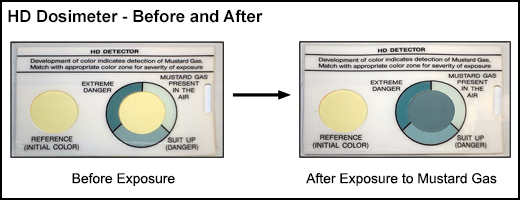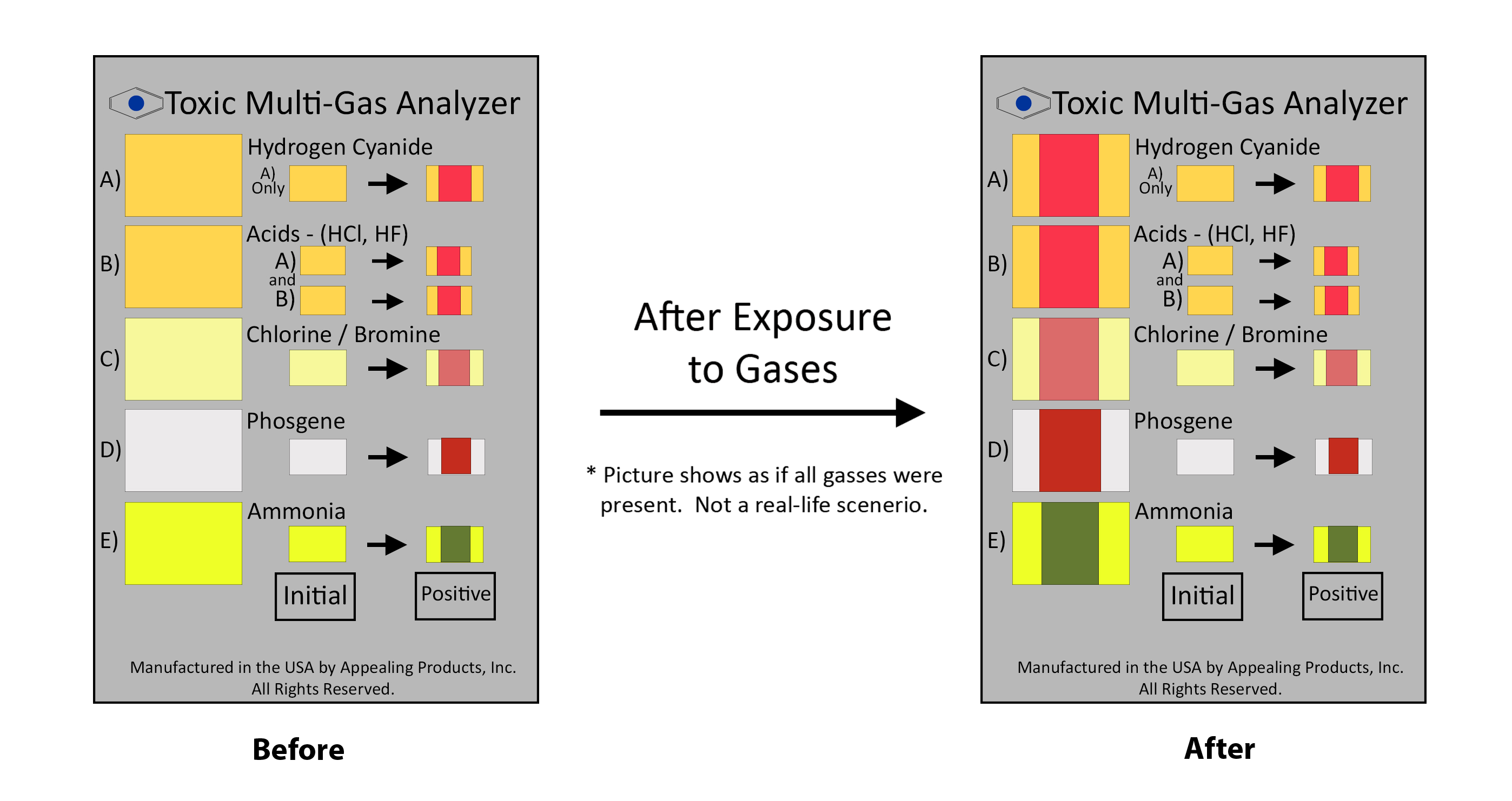This article focuses mainly on the technical issues of the possibility that warfare chemicals, WC, will be used in a new military conflict, one possibly initiated by N. Korea.
Overview
What Happened in the Airport in Kuala Lumpur, Malaysia and its Ramifications
Implications to Airports Security and to the Security of Other Critical Facilities
Table #1: Toxicity And Physical Properties of Warfare Chemical Agents and of Other Materials
| Compound |
LDLo (µg/kg) |
LD50 Rat (µg/kg) |
Vapor Pressure at 25°C (mm Hg) |
Toxicity Relative to KCN |
Density (g/cm3) |
Solubility at 25°C (g/100mL) |
| 86 (skin) | 0.0007 | 651.17 | ||||
|
Sarin, GB |
30 (muscle) | 75.86 | ||||
|
Mustard, HD |
64000 (skin) |
0.0684 |
||||
|
Potassium cyanide |
2857 (oral) | |||||
| Arsenic trioxide | 29000 (oral) |

Figure #2 shows the RON™ detector, a compact color-based detector for several toxic industrial chemicals, TIC. This detector was developed by Appealing Products Inc., API, for detecting several common TIC that were used in Iraq and Syria to terrorize civilians. https://www.chemsee.com/gas-exposure-monitoring/multi-gas-detector/.

Table #2: On Practical, Detectors, Decontamination Hardware and Medical Hardware Pertinent to WC, Needed in Vulnerable Facilities
|
Compound
|
Military Chemical Color Detection
|
Non-Military Chemical Color Detection
|
Military decontamination kit,
USA. External
|
Other decontamination Kits
|
Decontamination Kits-Internal
|
Ad-Hoc External Decontamination
|
Medical Counter-measure In Vivo
|
Medical Counter-measure Assistance
|
|
|
Yes4
|
Yes5
|
Yes6
|
Atropine5
|
Yes7
|
|||||
|
Sarin, GB
|
Yes1
|
Yes4
|
Yes5
|
Yes6
|
Atropine5
|
Yes7
|
|||
|
Mustard, HD
|
Yes1
|
Yes4
|
Not available
|
Yes6
|
No antidote
|
Wash Immediately
|
|||
|
Potassium cyanide
|
For HCN and (CN)2
|
Yes2
|
Water wash
|
Yes4
|
Yes4
|
Wash with water
|
|||
|
Arsenic trioxide
|
Yes3
|
Yes4
|
Soap & Water
|
||||||
|
Medium
|
Medium
|
Medium
|
Small
|
||||||
|
Ease of Use
|
Medium
|
Medium
|
Needs Medical Supervision
|
Needs Medical Supervision
|
Needs Medical Supervision
|
||||
|
Training Required
|
Minimal
|
Minimal
|
Medium
|
Minimal
|
|||||
|
Maintenance required
|
Minimal
|
||||||||
|
Space required
|
Medium
|
Small
|
Small, Vented
|
Small, Vented
|
Small
|
Small
|
Small
|
||
|
Shelf life
|
1-2 yrs
|
1-2 yrs
|
1-2 yrs
|
1-2 yrs
|
1-2 yrs
|
1-2 yrs
|
|||
|
Device volume
|
Medium
|
Small
|
Medium
|
Medium
|
Small, Vented
|
Small, Vented
|
|||
| 1 | See for example: https://www.chemsee.com/warefare-chemicals/ | ||||||||
| 2 | See for example: https://www.chemsee.com/warefare-chemicals/ | ||||||||
| 3 | See for example: https://www.chemsee.com/warefare-chemicals/ | ||||||||
| 4 | Contact us for details. | ||||||||
| 5 | Injection of an antidot such as Atropine or Pralidoxime. https://chemm.nlm.nih.gov/antidote_nerveagents.htm | ||||||||
| 6 | Start with warm water and mild soap and follow with hot water and harsh soap. Contact API for details. | ||||||||
| 7 | Assistance in breathing and regulation of heart functions | ||||||||
[1] Note that cyanogen and hydrocyanic acid are NOT removed by common activated carbon filters but special filter materials are available that can remove them.